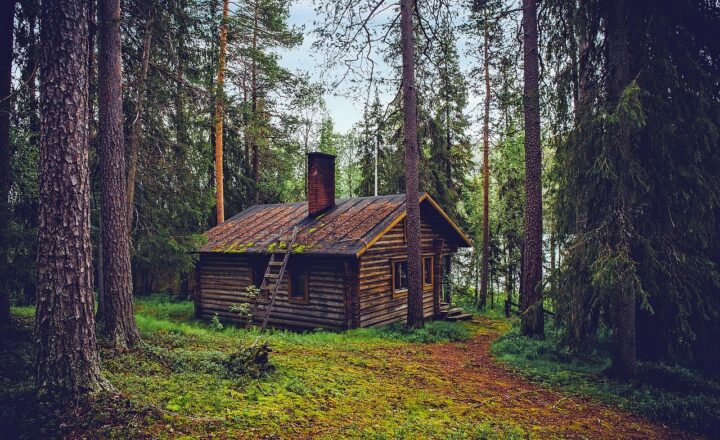How to Make Soap at Home: A Fun and Creative Hobby That’s Good for the Environment
November 14, 2024

Making soap at home is not only an enjoyable and creative hobby but also an excellent way to take care of the environment by crafting eco-friendly products. Most commercial soaps are loaded with synthetic chemicals that are harmful not only to your skin but also to our planet. By making your own soap, you can control the ingredients and reduce your environmental footprint.
1. The Benefits of Homemade Soap
Homemade soap has several advantages over commercial products:
- Natural Ingredients: You know exactly what goes into your soap, and there are no harmful additives or preservatives.
- Customization: You can create unique scents, colors, and shapes to suit your taste or give as gifts.
- Cost-Effective: While the initial investment in supplies may be higher, homemade soap saves you money in the long run.~
- Eco-Friendly: By sourcing natural ingredients and using sustainable practices, you are doing your part in protecting the environment.
- Creative Outlet: Soap making is a fantastic way to express your artistic side and explore new techniques.
Keeping these benefits in mind, let’s explore how to make soap at home in a step-by-step guide.
2. Essential Ingredients for Soap Making
To get started, you will need some basic ingredients:
- Lye (Sodium Hydroxide): This is a caustic substance that reacts with oils to create soap. Handle with care!
- Oils: You can use a variety of oils including olive oil, coconut oil, palm oil, and essential oils for fragrance.
- Water: Generally, distilled water is recommended for a clean mix.
- Additives: Natural colorants (like clay or herbs) and exfoliants (like oatmeal or poppy seeds) can enhance your soap.
Make sure to wear safety gear: gloves and goggles to protect yourself from lye burns during the process.
3. The Cold Process Soap Making Method
One of the most common methods for making soap at home is the cold process method. Follow these steps:
- Prepare Your Workspace: Clean your area and gather all ingredients and tools including a scale, thermometer, stick blender, and soap molds.
- Measure and Mix Lye: In a well-ventilated area, accurately measure lye and water using a scale. Gradually add lye to the water (never the other way around). Stir until dissolved and let cool to around 100°F.
- Measure Oils: While lye is cooling, measure your oils and heat them until they reach 100°F. You can combine different types of oils for varied properties.
- Combine Lye and Oils: Once both the lye and oils are at the right temperature, slowly add the lye to the oils while blending with a stick blender. Mix until “trace” is reached, meaning the mixture thickens slightly and holds a trail when drizzled over the surface.
- Add Colorants and Essential Oils: Now is the time to add any colorants or essential oils. Stir gently to incorporate them evenly throughout the soap mixture.
- Pour Into Molds: Pour the mixture into your soap molds. Tap the mold gently to remove any air bubbles.
- Insulate & Cure: Cover the molds with towels to insulate and let them sit for 24-48 hours. After this curing time, remove the soap from the mold and cut into bars. Let the soap cure for 4-6 weeks before using to allow the lye to neutralize completely.
With these steps, you can create a wonderful batch of homemade soap that is both practical and enjoyable!
4. Storage and Usage Tips
Once your soap is ready, store it in a cool, dry place. Homemade soap can last up to a year if stored properly. Here are a few tips for enjoying your soap:
- Drying: Allow the soap to dry completely before storing to help prevent mold growth or unwanted moisture.
- Usage: Use your soap on damp skin for a luxurious lather.
- Gifting: Wrap your soap in recycled paper or cloth for a thoughtful, eco-friendly gift!
5. Exploring Additional Techniques and Ideas
Once you’re comfortable with the cold process method, you might want to explore additional techniques:
- Hot Process Method: A quicker method involving cooking the soap mixture but requires similar equipment and safety precautions.
- Melt and Pour Soap: A simple technique using pre-made soap base, suitable for beginners or crafting with kids.
- Thematic Soaps: Customize your soaps for holidays, events, or themed parties.
Exploring different methods and ideas enables you to keep your soap-making journey exciting.
Conclusion
Making soap at home is a fulfilling and environmentally-friendly hobby that offers countless opportunities for creativity. By crafting natural soap, you not only create wonderful products for personal use but also contribute to a healthier planet. Start today with the steps outlined above, and watch your soap-making skills flourish. So let your creativity flow and enjoy the beautiful art of soap making!
Remember, this hobby can be as simple or as intricate as you wish, giving you the freedom to experiment and enjoy while making a product that’s good for you and the environment.





